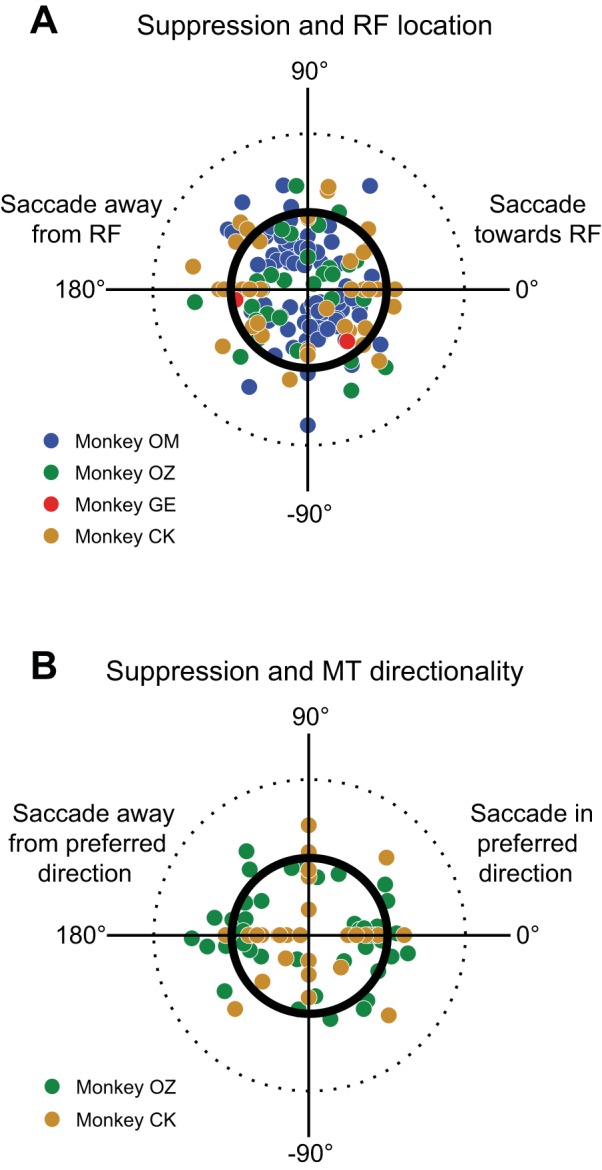Fig. 4.

Relation of suppression in MT to receptive field location and preference for motion direction. A: strength of suppression relative to receptive field location. Data from 73 neurons in four monkeys that had significant suppression are shown; each neuron contributes at least two data points, one for each saccade direction. The location of the receptive field for each MT neuron has been rotated so that it lies directly to the right (0°). The thick inner circle represents no difference between probe 1 and probe 2, and the dashed outer circle represents a 100% response increase. Suppression is not significantly related to receptive field location. B: relation of suppression to preferred direction of motion for 33 MT neurons in monkeys OZ and CK. Plot is similar to that in A, except now the canonical direction at 0° represents the neuron’s preferred direction of motion. Suppression is not dependent on directional selectivity in MT.
